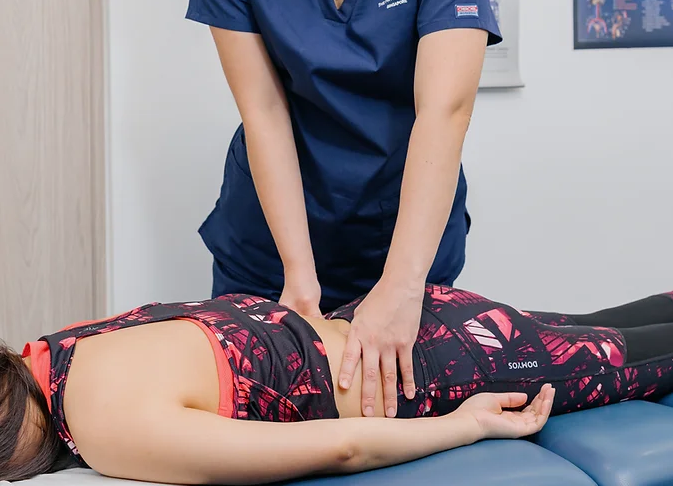Physiotherapy, often known as physical therapy, is a treatment method that use specific exercises, manual therapies, and education to facilitate healing. It lessen discomfort, and restore mobility and function. In this piece, we’ll discuss the benefits of physiotherapy neck pain and for relieving back and neck discomfort. Regardless of the cause of your pain—an injury, poor posture, or something else. That’s entirely—physiotherapy has the potential to provide a comprehensive and evidence-based approach to diagnosis, treatment, and rehabilitation.

Physiotherapy For Neck Pain:
Common causes of neck pain include overuse of certain muscles, improper posture at work, accidents, and degenerative diseases. Physiotherapy can alleviate neck pain by helping to strengthen the muscles around the neck. It can improve range of motion, and correct postural faults. A qualified physiotherapist will do a thorough examination to identify the source of the discomfort. It will also develop an individualized treatment strategy to target the specific areas of concern.
Options For Relieving Neck Discomfort Include:
1. Manual Therapy: Muscle tension, range of motion, and tissue healing can all benefit from manual therapy techniques such joint mobilization, soft tissue mobilization, and therapeutic massage.
2. Physical therapy: Physical therapy can help alleviate discomfort and prevent recurrences by strengthening muscles in the neck and shoulders, improving posture, and promoting more stability.
3. Correcting poor posture: Instruction in correct posture and ergonomics is essential for avoiding and treating neck pain. A physiotherapist may provide you pointers on how to hold yourself upright when seated, standing, and utilizing various types of technology.
4. Other methods: Heat, ice, electrical modalities, and other pain-relieving methods may be used in physiotherapy to help decrease inflammation and alleviate pain.
Physical Treatment For Low Back Pain:
Pain in the lower back is fairly prevalent and can have a significant impact on one’s ability to perform daily tasks and overall quality of life. Physiotherapy for lower back pain is a multimodal approach to treating low back pain. It is working to alleviate symptoms by promoting healing and strengthening weakened muscles, and enhancing mobility and independence. The causes of pain may be pinpointed and an effective treatment plan designed with the help of a thorough physiotherapy evaluation.
Possible Treatments For Low Back Pain Include:
1. Core Strengthening: Strengthening the stomach and back muscles (the “core”) helps to stabilize the spine and lessens the load on the lumbar region.
2. Motion Exercises: Improve your mobility and decrease your discomfort with flexibility and range of motion exercises designed for your lower back and related muscles.
3. Manual Therapy: Techniques including spinal mobilization, joint manipulation, and soft tissue mobilization can help with spinal alignment, muscular tension, and healing.
4. Education and Ergonomics: To avoid additional damage and maintain a healthy spine, physiotherapists educate patients on optimal body mechanics, lifting methods, and ergonomics.
5. Functional Rehabilitation: Rehabilitation exercises that mimic real-life motions and activities aid in the restoration of function as well as the improvement of general strength and endurance.
Find Out More About Physiotherapy
Physiotherapy for neck and lower back pain may include modalities such as heat or cold therapy, electrical stimulation, ultrasound, or traction in addition to the aforementioned therapeutic strategies. These treatments can help to relieve pain, inflammation, and muscular spasms while also promoting tissue recovery.
Patient education is another critical part of physiotherapy. Physiotherapists play an important role in educating people about their condition, advising them on self-management measures, and teaching good body mechanics to avoid future injuries. They may also provide recommendations on lifestyle changes, ergonomic adaptations, and stress-reduction measures.
Furthermore, Physiotherapy for lower back pain is not just for treating acute or chronic pain. It can also serve as a preventative measure by detecting possible risk factors and recommending workouts and procedures to maintain good musculoskeletal health. Regular physiotherapy treatments can help people maintain their flexibility, strength, and posture, lowering their chances of experiencing neck or lower back discomfort.
It is critical to understand that physiotherapy is a collaborative practise. Treatment effectiveness is dependent on the individual’s active engagement in their own rehabilitation. Compliance with recommended exercises, attention to home exercise programmes, and following the physiotherapist’s instructions are all important aspects in getting excellent results.
It is essential to pick a skilled and experienced physiotherapist when seeking physiotherapy for neck pain or lower back pain. Look for qualified and licensed professionals with experience treating musculoskeletal issues. You may locate a reliable physiotherapy clinic or practitioner by reading reviews, asking for references, and completing research.
Conclusion:
Physiotherapy is an effective and evidence-based method of managing and treating neck and lower back pain. Physiotherapy can give long-term relief and improve overall quality of life by treating the underlying causes, strengthening muscular strength and flexibility, and promoting good posture. Consider visiting a competent physiotherapist if you are having neck or lower back discomfort. They can diagnose your condition, establish a personalized treatment plan. It can lead you through exercises and procedures that will help you on your way to recovery. Remember that physiotherapy is a collaborative procedure that allows you to play an active role in your recovery journey. It live a pain-free and healthy lifestyle.
You may also like
-
Effortless Pigmentation Mark Removal: Exploring the Benefits of Yellow Laser Treatment
-
Pelvic Mesh Implants: What You Should Know About Potential Side Effects
-
How to Recover From a Foot Injury
-
Finding Balance: 7 Stores Offering the Best Traditional Chinese Medicine for Stress Relief
-
Sildisoft 100 and Valentine’s: Crafting Moments of Love

